Hide and Seek with Forest, Sea and Lake
An Unforgettable Journey with Old Greek Villages, Colorful Aegean Markets, Pine-Scented Deserted Bays, Fishing Shelters and Countless Surprises…
Dilek Peninsula Buyuk Menderes Delta National Park
Dilek Peninsula Buyuk Menderes Delta National Park is a delta with a rich variety of fish and a natural wonder with its historical and cultural richness surrounding which has a botanical garden with almost all plants spreading along the coast from the Mediterranean to the Caucasus, a natural land area with birds of prey and wild animals and the underwater riches surrounding it, as well as hundreds of species of birds.
The northern route of the peninsula is the Guzelcamli route of the National Park and the southern route is Soke route, Buyuk Menderes Delta.
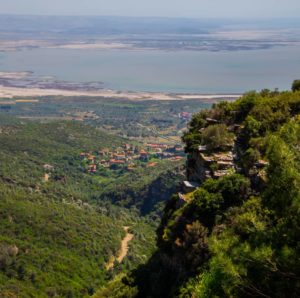
Geography with Surprise
On the Dilek Peninsula, you can take the Aegean Sea to your right and curl up among the pine forests and proceed to the depths of the national park. You can meet cute squirrels climbing trees along the way, turtles that trying to cross, swarms of pigs and even fallow deer if you are lucky. In the first five kilometers of Icmeler and Aydinlik bays, the sea is sparkling.
Pointing to Olukdere Canyon a little further, the sign points to one of the peninsula’s hiking trails. This canyon, one of the most popular hiking routes, starts from a narrow path where pine trees form a tunnel and stretches for about three kilometers with small creeks.
The coast of Kavakliburun which is under the shade of plane trees, is known as the place where the Long Whale, a Mediterranean species, hit the ground in 1997. The Karasu Bay, further afield, attracts attention with its long pebble shore. The Kursunlu Monastery is a historical monument on the northern slope of the Dilek peninsula with a view of 690 m high overlooking the plain and the bay.
This marvelous peninsula, which has no other example in the world, is protected by many international conventions such as the European Convention on the Conservation of Wildlife and Natural Habitats.
Peace and Romance; Gullubahce And Old Doganbey
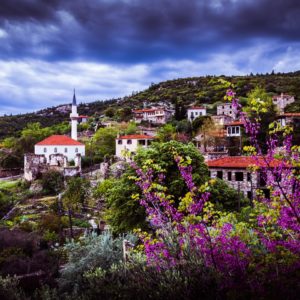
The old Greek village of Gelebec which is hidden on the slopes that gives Gullubahce its original charm. Leaning on the slope of a narrow valley covered with pomegranate, olive, fig and tangerine trees, the village is surrounded by the scent of roses in the summer months as it has been for centuries. The green hills overlooking the forest-covered valley make the Toskana villages feel romantic.
The double-aisled church of St. Nicholas in the village square, surrounded by stone walls adorned with bougainvillea, still has ceiling and column decorations. Located in the local market very close to the entrance point of the ancient city of Priene, Gullubahce cloth dolls, hand-made crafts and local flavors are waiting for guests in Gullubahce Turunclar.
On the way around Atburgazi and Tuzburgazi, a wonderful sea breeze can bring the smell of thyme and sage from the hills of the villages.
In the spring months, the colorful Eski Doganbey village will blink at a distance as you head towards where the road lined with colorful flowers and yellow mimosa takes you. In this village, formerly known as “Domatia ” with its calm and silence, it seems time has stopped.
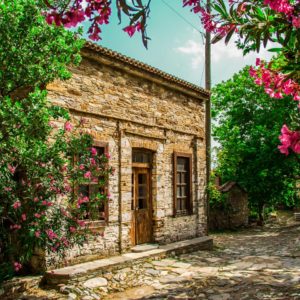
Old Doganbey Village is like an open air museum exhibiting the finest examples of Greek and Turkish architecture. There are chapels and churches with original historical buildings.
Doganbey village, where you can travel in time with its cobblestone streets, stone houses with courtyards, small squares under the shade of plane trees, church and olive oil mills, has been restored and used to serve as 115 Dilek Peninsula National Park Visitor Promotion Center 115. National Park fauna and flora identifying boards, models, you can see animal and plant samples, you can observe birds in the delta with a telescope.
23 Million Years of Adventure
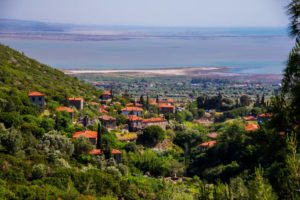
By placing the alluvial flood plains on your left, you can reach the south of the peninsula through the abundance that seems to last forever.
It’s like going to the beach through a sea of flowers. In spring, red mountain flowers, yellow and yellow mimosa, daisy fields, anemones, jonquils and poppies cover the slopes with a colorful cover. The road from Doganbey to the end of the Dilek Peninsula takes travelers to the fishing shelters along the Karine Lagoon.
Once upon the end of this plain, once home to the magnificent harbors of ancient cities, a shallow sea of miles begins. The blue waters of Karine mix with the eternity of the sky at the horizon which is separated from the sea with a long cordon.
Spreading about 25 square kilometers, the lake is the largest of the three separate lagoons lined from north to south along the coasts of Menderes Delta. Buyuk Menderes River distributes abundance to the plains with its abundant alluvial sand grains which was born from the mountainous regions of Inner Aegean and poured into the Aegean Sea after a journey of 584 kilometers. On the other hand, harbors turn into plains, bays into lakes and shores into shallows.
The river fills 6-7 meters each year which has been in operation for 23 million years.
The ancient settlement of Tebai and Lade Island is located in the immediate vicinity of Karine, where several old customs buildings have been restored and used. In this place where the road ends, you should taste the daily fish and cheese from the island of Samos which are kept there in wonderful restaurants that do not exceed the fingers of a hand.
Lake People
It is like being in the middle of a nature feast, extending from the northern shores of the Menderes Delta which spans an area of 13 thousand hectares to Dil Burnu at the end of the Dilek Peninsula… Almost every bend along the way brings you a new sight.
Islets covered with reeds, salty ponds, flood plains and vaguely selected fishermen’s cottages surrounding the azure waters of the Aegean Sea…
In this natural pond with a high nutrient rate, all kinds of fish are easily breedable, and fishermen build a natural embankment of kilometers of crows every year to catch them easily. Of course, they are accompanied by hundreds of species of birds as well as pink flamingos.
From here you can explore the other two lagoons to the south, along the shore of Lake Karine, in the direction of Didim. Batikoy Lagoon consists of three different lakes called Deringol, Mavigol and Kocagol.
Akkyo Lagoon is home to many small and large lakes and islets. Just as in Karine Lake, Akkoylu fishermen prepare pike around their huts. The Kabahayit Islands, which form the southern border of the Menderes lagoons, are the last point of this surprising route. When you come here you will feel that you love this land that nature embraces with all its generosity.
Aydin offers a visual feast for the eyes used to chasing the colors of the world.
Watching Buyuk Menderes Delta which has been distributing fertility for centuries and the lagoon formed by the magnificent dance of the sea and land from the foothills of Doganbey Village which is famous for its age-old stone houses and hills covered with olive trees, is also an indescribable source of happiness in Aydin.
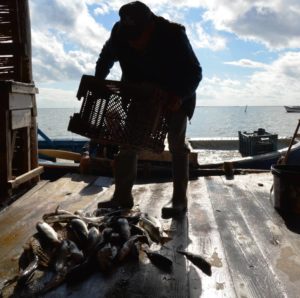
The lake villages of Bafa which is seen from the foothills of the Latmos Mountains, hiding the traces of thousands of years, Arapapisti Canyon which is a natural wonder, from the Akcay Valley to Madran and Karacasu Highlands, will never end the magnificent natural landscapes that Aydin will offer you.

